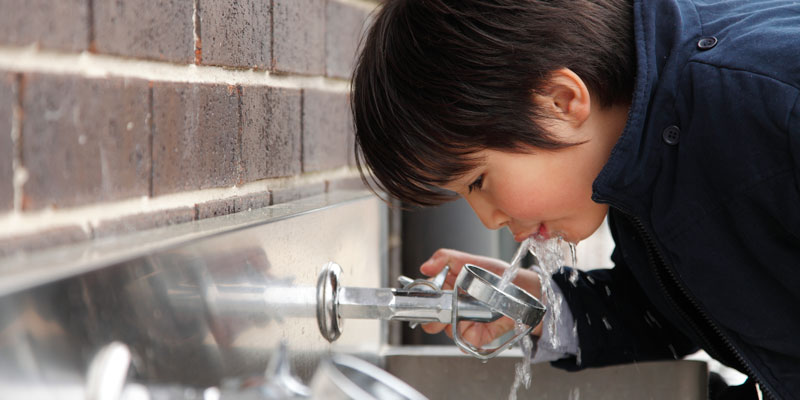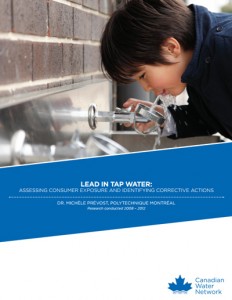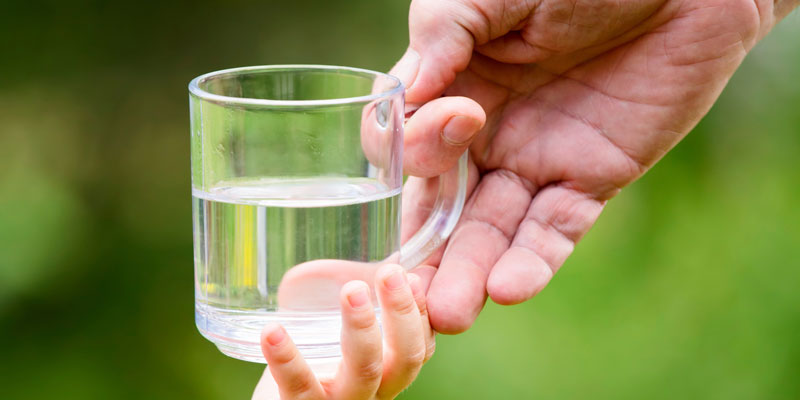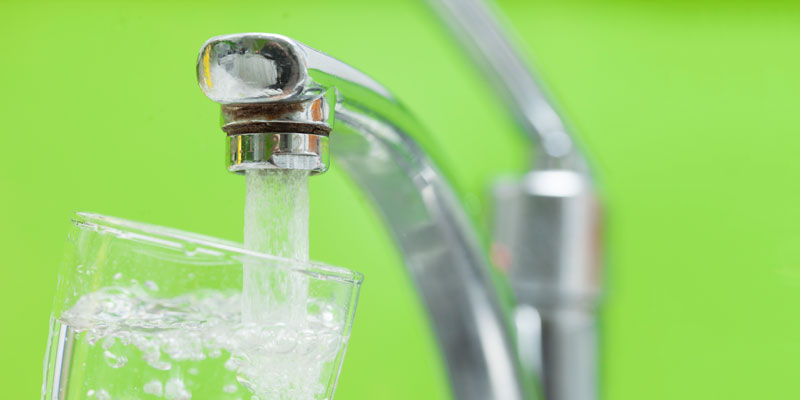Developing a Comprehensive Strategy to Reduce Lead at the Tap in Canada
Principal Investigator - Michèle Prévost, Professor, École Polytechnique de Montréal, 2008 - 2012

Challenge
Recent studies show that lead levels below regulatory standards may impact the health of young children. The project team, led by Dr. Michèle Prévost, identified the need to evaluate particulate lead levels in tap water, which is often undetected or underestimated by some analytical and sampling protocols. The project focused on three main study areas: investigating whether low blood lead levels (BLLs) (less than the regulatory level), could impact the health of children; the effectiveness of lead corrosion control measures implemented in large buildings (such as schools, daycare centers, government buildings, etc.); and the effectiveness of partial lead service line replacement for the reduction of lead in tap water.
The results from this project are serving to identify the problem and determine the most successful and cost-effective approaches for lead control. The project has revealed that the effectiveness of corrosion control treatments implemented by utilities needs to be evaluated, as well as the practice of partially replacing lead service lines by municipalities, as evidence suggests that this practice increases lead release.
Project
Lead exposure from residential tap water was estimated from sampling lead levels at the tap and in young Canadian children’s blood. Blood lead levels of children with high and low-lead exposure levels were compared. Project findings indicate that the presence of lead service lines is the most constant contributor to elevated blood lead levels. Investigations of the effectiveness of various protocols for monitoring lead in tap water were evaluated by reviewing guidelines, regulations and practices for lead monitoring in Canada, as well as a comparing sampling protocols in full-scale systems.
The results revealed that these protocols generate different lead concentration results. As a result, tailored protocols for large buildings and residences with lead service lines were developed and tested at full scale by this project. The efficiency of different corrosion control methods were investigated at bench, pilot and full scales. The findings suggest that orthophosphates are the most efficient treatment, and that sodium silicates may also be a viable alternative.
Investigations of the practicality of partial lead service line replacement revealed that this practice represents the best option for controlling lead in tap water; however, this practice may increase lead leaching in tap water due to the disruption of the scales and galvanic and deposition corrosion. Studies of lead corrosion in large buildings involved conducting on-site monitoring and experiments in a Correctional Service of Canada building. Results showed that extreme lead levels can occur in the tap water of both old and newly built large buildings due to the presence of brass material and solders.
Outputs
The results of this study have been translated into several technical reports and documents for several municipalities and government agencies.
- Reports produced by École Polytechnique de Montréal include
- A report on the use of point-of-use devices
- A report on LSL detection protocol for the City of Montreal, which includes lead source identification and implementation of different corrective measures for Correctional Services of Canada
- A lead sampling manual
- Report produced by Laval University together with École Polytechnique de Montréal produced
- The final report on lead in tap water for Health Canada.
- Dalhousie University produced
- A lead service line sampling program manual that is presently being used by Halifax Water
- A fountain survey at Dalhousie and prepared a guidance manual for sampling fountains on campus.
Other end-user outputs include:
- A computer model (zonal model), built by team member Tony Tsui for the cities of London and Ottawa, which predicts lead release from distribution system pipes. Students and research staff have provided technical and sampling training courses to the Quebec health agency (INSPQ) and Montreal Public Health Agency (DSP) for detecting lead levels in tap water.
Outcomes
- The creation of new protocols for Ontario and Quebec Ministries of Environment, and the development of a Corrosion Guidance Manual by Health Canada.
- The implementation of lead service line sampling and replacement programs by Halifax Water, the City of Montreal and the City of Toronto.
- New partnerships have been built with Correctional Services of Canada and elementary school boards due to the results related to lead in large buildings.
- Correctional Service of Canada has implemented corrective measures in its buildings (orthophosphate addition, faucet replacement, and epoxy relining) and has asked École Polytechnique de Montréal to develop a lead sampling protocol for tap water in its buildings.
- The success of this project resulted in the research team being awarded a contract with Aboriginal Affairs Northern Development Canada to investigate lead and copper release in drinking water in Nunavut.
- The team has also been asked by Nova Scotia Department of Health to develop a lead strategy for drinking water fountains
Find more reports on lead in drinking water





